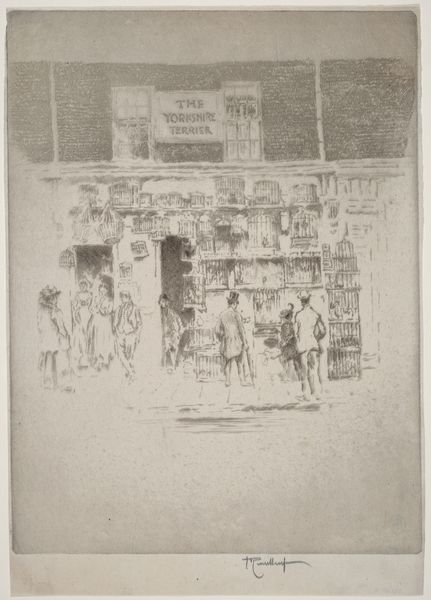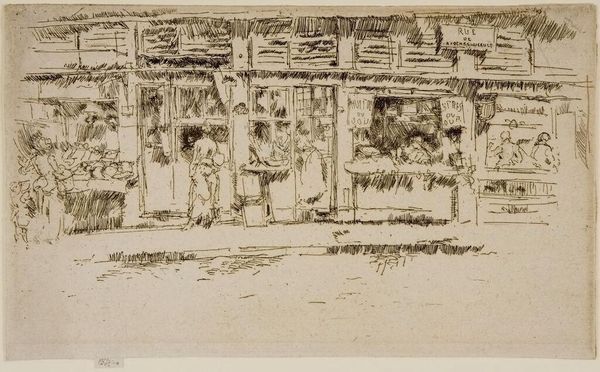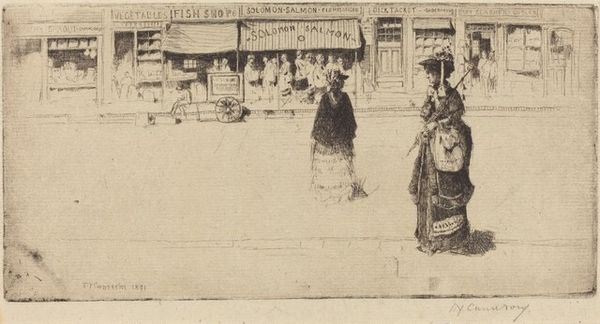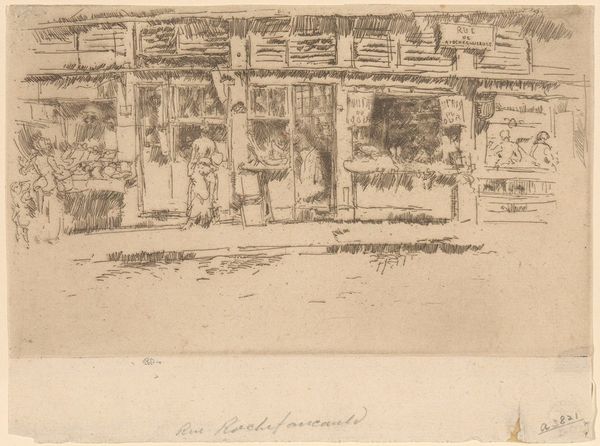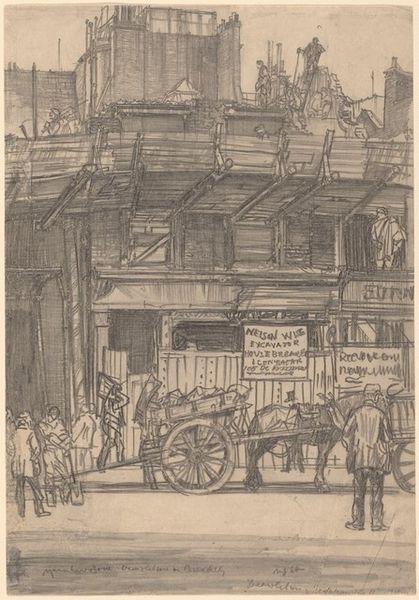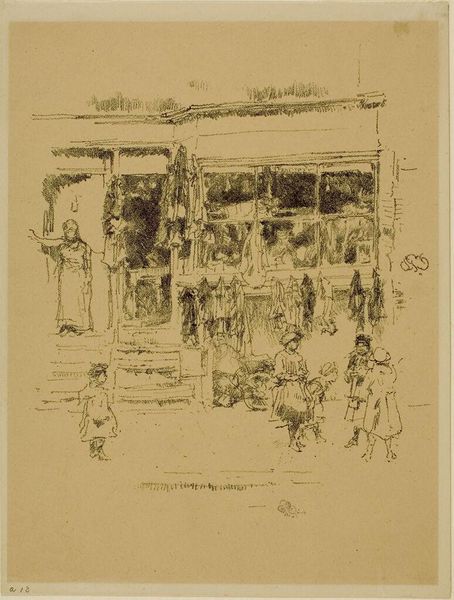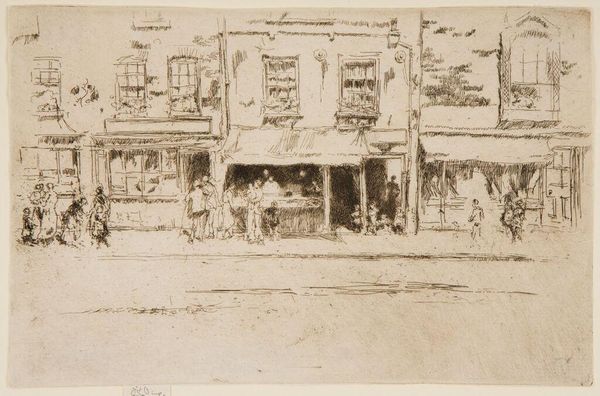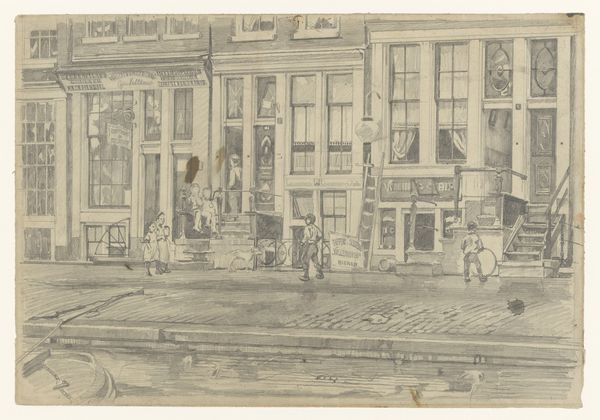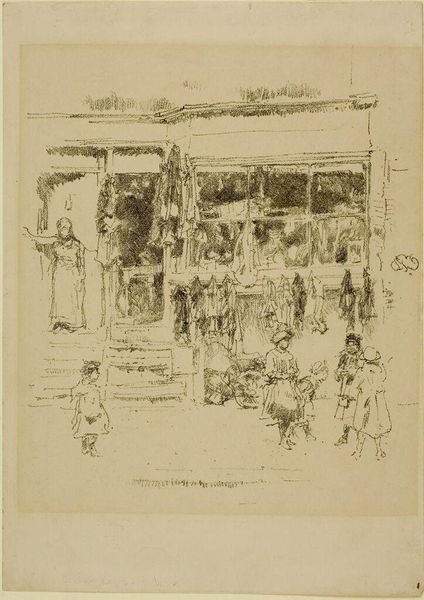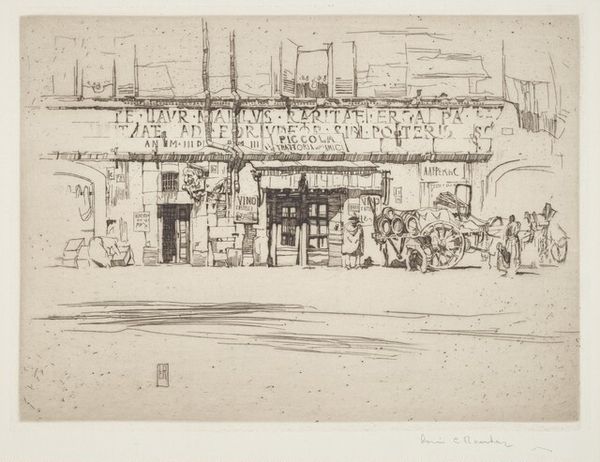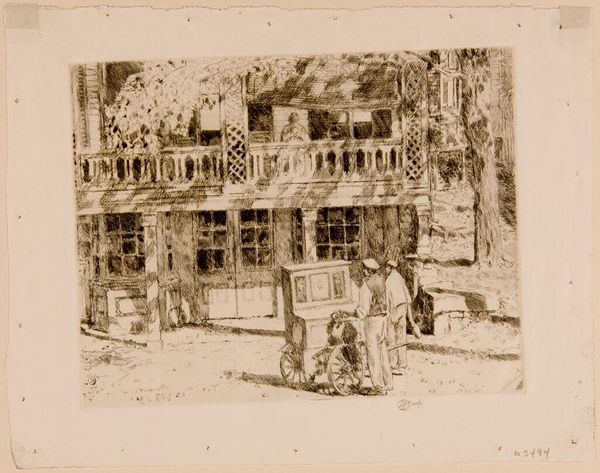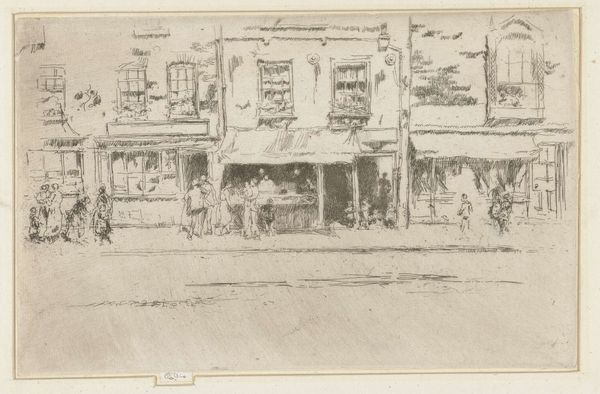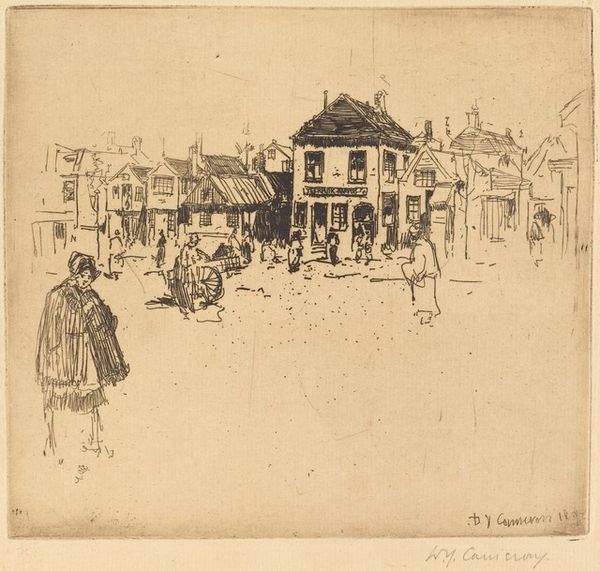
drawing, print, etching, ink
#
drawing
#
toned paper
#
light pencil work
#
quirky sketch
# print
#
pen sketch
#
etching
#
pencil sketch
#
personal sketchbook
#
ink
#
ink drawing experimentation
#
pen-ink sketch
#
line
#
sketchbook drawing
#
cityscape
#
sketchbook art
#
realism
Copyright: National Gallery of Art: CC0 1.0
David Young Cameron made "Tabak en Sigaren" using etching, a printmaking technique that dates back centuries. A metal plate, usually copper or zinc, is coated with a waxy, acid-resistant substance called a ground. The artist then uses a needle to draw through the ground, exposing the metal beneath. The plate is immersed in acid, which bites into the exposed lines, creating grooves. Ink is applied to the plate, filling the grooves, and then the surface is wiped clean. Finally, paper is pressed against the plate, transferring the ink to create the print. The fine lines capture the details of the shopfront and the figures, giving the scene a sense of depth and texture. The etching process allows for intricate details and subtle tonal variations, which Cameron uses to full effect. Consider how the consumption of tobacco and other goods connects to global networks of production, labor, and trade. By focusing on the processes and materials involved in making art, as well as the subject matter depicted, we can appreciate the rich layers of meaning embedded within artworks.
Comments
No comments
Be the first to comment and join the conversation on the ultimate creative platform.
